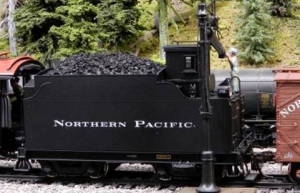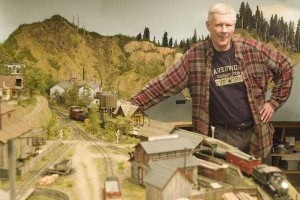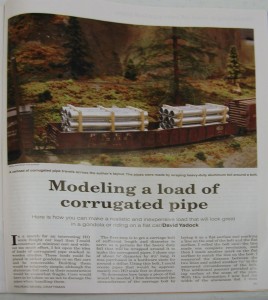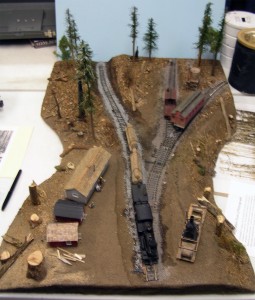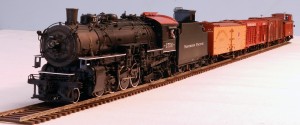Ed Liesse
JJ Johnston, our exuberant leader of the Eastside Get-Together, welcomed about 35 attendees for the March meeting. As usual, he did his introductions of the officers and committee chairs of the 4th Division and the MMRs in attendance.
Asking for new attendees, he found three: Jerry Madsen who said he wasn’t new but hadn’t been there for awhile being busy as the VP of the Puget Sound Garden Railroad Society; Steve Kyle who is a “high-railer” came to see what we’re all about; Ben Wong who is looking for something to do after retiring! All were welcomed to the group and encouraged to join us again.
Announcements were made by JJ on the upcoming convention and the special building contest; Alex Brikoff, 4D Education Committee Chair, mentioned that the Video Library function was being moved to the Education Committee and looking for volunteers to help with the video library; Alex also hopes to create a database of clinicians and clinics; Rob Jones, 4D Membership Chair, said that membership was going okay so far; Ken Liesse mentioned that the Northwest Railroad Museum in Snoqualmie is looking for new volunteers for the conservation/restoration project they have going (both Ken and Russ Segner are volunteers at the Museum, Ken in Operations and Russ in Restoration); Rob mentioned that he could offer an additional discount on the items he brought from Eastside Trains.
Model of the Month had three entries: Mike Donnelly displayed pulpwood cars using real branches for loads; Rob Jones displayed fire trucks in N and HO using N’gineering Products for lighting; Bob Rorabaugh displayed a logging camp car kit with many details. The ultimate winner of the Model of the Month was Bob Rorabaugh.
After a short break for refreshments and voting on the Model of the Month and looking over the items Rob brought, it was time for our feature presentation.
We were privileged to hear from the 4D’s newest MMR, Glenn Farley. He actually had two different topics for presentation, one on Coal Loads and the other on Realistic Headlights. He had projected photos to show his methods and examples for us to see and, in some cases, handle.
For coal loads, he makes a base from blue foam to fit inside the car or tender. In his case, several years ago he happened on a sheet of thin blue foam which he claims he will never use up! He cuts a piece to fit the car then shapes the sides and the ends to look like the basic shape of a coal load. This shape goes back to before the days of the current flood-type coal loaders being used in the PowderRiver Basin in Wyoming and other locations. He then coats the load shape with an acrylic artist color to cover the blue foam. For coal, he finds a lump of coal (we won’t say where he finds it), puts it in a strong bag or several bags and proceeds to pound it to small pieces. He uses several plastic pipe end caps with holes drilled in the bottom to serve as filters for the coal, decreasing the hole size on each end cap until he has the size of coal he wants. When he has the right size of coal, he coats a small area of his shaped load base with Testor’s Gloss lacquer and sprinkles on the coal. Then he moves up a little on the load and repeats the lacquer and coal application and repeats this until the load is covered. After it has a chance to dry he comes back and repeats the process to fill in any holes.
For realistic headlights, he uses MV lenses and incandescent bulbs rather than LEDs. He finds the center of the lens on the back and drills hole just larger that the bulb size. He then checks the bulb for fit and glues it in place. This procedure works quite well for the diesels. For steam engines he turns down a Lucite rod to fit into the lens, uses a hot soldering iron to form a mushroom end on the rod (sort of a lens shape) and then places the bulb behind the mushroom end. All this goes inside the headlight housing! Luckily, with all the photos and the examples he brought, it was much clearer than trying to put it into words!
We hope to see you at our next Eastside Get-Together April 17. Don’t forget to file your income tax return before the 15th!
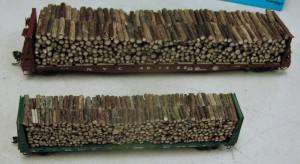

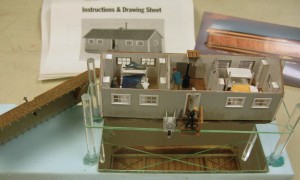
Click images to enlarge

